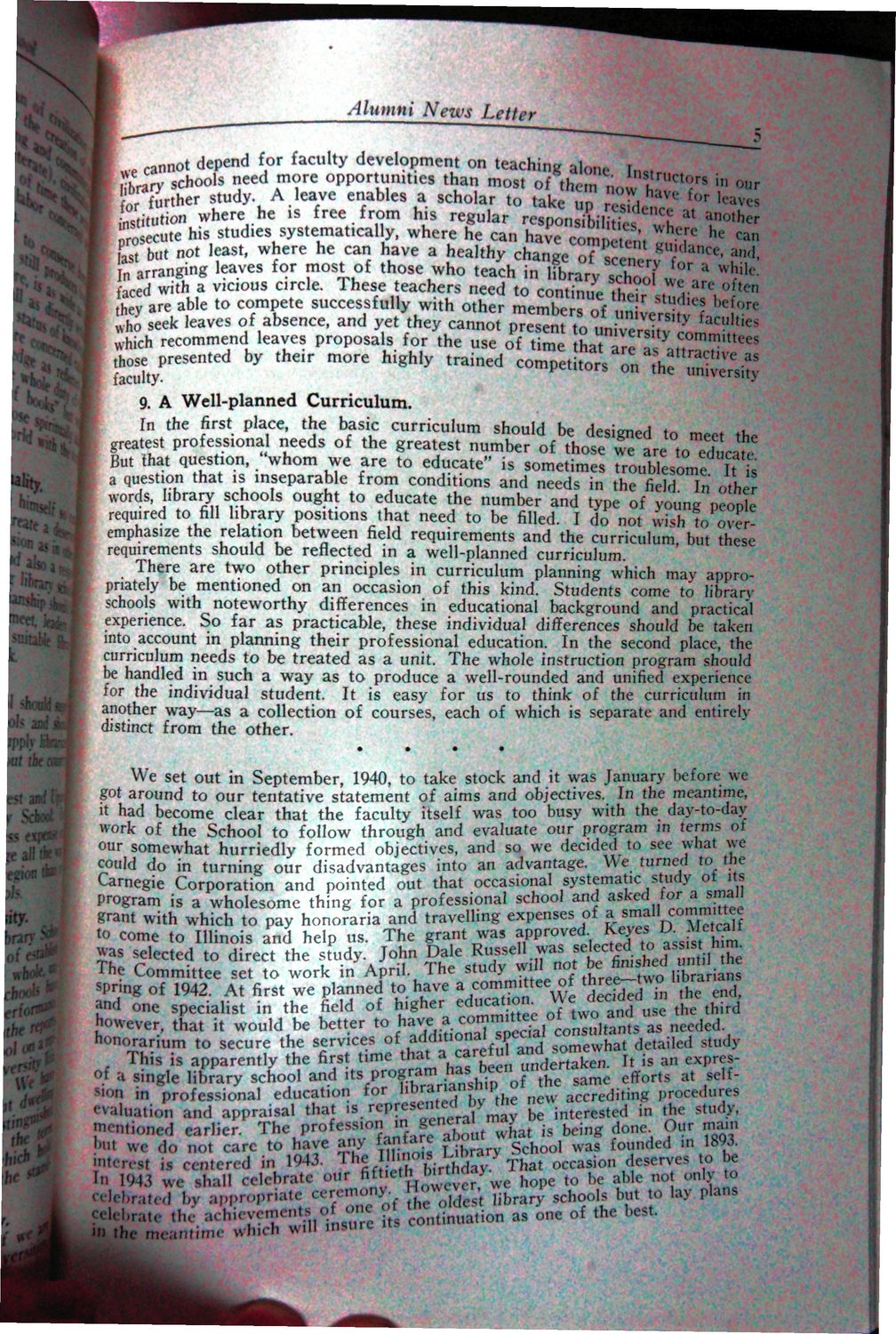| |
| |
Caption: UI Library School Alumni Newsletter - 29
This is a reduced-resolution page image for fast online browsing.

EXTRACTED TEXT FROM PAGE:
News v - cannot depend for faculty development on teaching al„ ne. Inst , s m,c r w r v schools need more opportunities than most of thcm'V, " l «>rs in our f t father study A.leave enables a scholar to take , " X ^ f<* " « S 3 at : 0 , h e r nstitution where he .s free from his regular r e s p o n s i b i l S J*L i" hc ca Jlecute his studies systematically, where he can have com ' e nt n T " muhinc last but not least, where he can have a healthy change of \ • , ^ and, 1 Wllil< n arranging leaves for most of those who teach in library schooTuI' ' ? which recommend leaves proposals for the use of time h a ^ a r e T ^ ° mm,ttces m !Sy prese more highly trained ^^>^SSg h 9. A Well-planned Curriculum. In the first place, the basic curriculum should be d e s i g n t^ ™^. <u 6 i r t e s t professional needs of the greatest number of t h o ^ r e l r e ' o T d t a But that question, whom we are to educate" is sometimes troublesome I is f a question that is inseparable from conditions and needs in the field In other words, library schools ought to educate the number and type of young people required to fill library positions that need to be filled. I do not wish to overemphasize the relation between field requirements and the curriculum but these requirements should be reflected in a well-planned curriculum. There are two other principles in curriculum planning which may appropriately be mentioned on an occasion of this kind. Students come to librarv schools with noteworthy differences in educational background and practical experience. So far as practicable, these individual differences should be taken into account m planning their professional education. In the second place, the curriculum needs to be treated as a unit. The whole instruction program should be handled in such a way as to produce a well-rounded and unified experience for the individual student. It is easy for us to think of the curriculum in another way—as a collection of courses, each of which is separate and entirely distinct from the other. We set out in September, 1940, to take stock and it was January before we got around to our tentative statement of aims and objectives. In the meantime, was worn ot the bchool to follow through and evaluate our program m i n n o «» our somewhat hurriedly formed objectives, and so we decided to see what we could do in turning our disadvantages into an advantage. We turned to the Carnegie Corporation and pointed out that occasional systematic study ot its askcd a Program is a wholesome thing for a professional school and ./°;" ™ grant with which to pay honoraria and travelling expenses of a small commute. e 1 to come to Illinois and help us. The grant was approved. J>eyes "• ™ j™ was selected to direct the study. John Dale Russell was s e ^ e d t o j s " m The Committee set to work in April. The study will not be ^ " 1 mnd the two spring of 1942. At first we planned to have a comm.ttee^of th two in - in the mcantim
| |